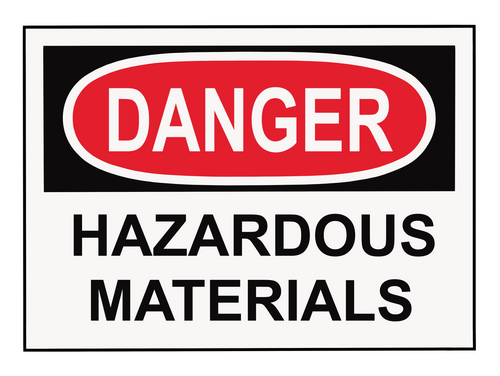Do your employees know how to handle hazardous materials safely? Here are 11 basic rules all employees who handle hazardous materials should know and follow.
 |
These 11 rules are presented in no particular order. They are all top priorities for chemical handlers. However, feel free to rearrange them in whatever order you think is best for your workplace, your workers, and your material hazards.
You’ll undoubtedly have other safety rules to add to the list. Better yet, present the list in a safety meeting and get employees involved in helping you add to the list. This will create a sense of ownership over your safe chemical handling rules. To employees, they’ll be “our” rules rather than “their” rules. That way, people will be more likely to follow them.
Rule #1. Follow all established procedures and perform job duties as you’ve been trained.
Rule #2. Be cautious and plan ahead. Think about what could go wrong and pay close attention to what you’re doing while you work.
Rule #3. Always use required PPE—and inspect it carefully before each use to make sure it’s safe to use. Replace worn out or damage PPE; it won’t provide adequate protection.
Your questions answered: Need help determining your generator class? This report offers guidance, plus highlights 20 questions that stumped your colleagues. Download today!
Rule #4. Make sure all containers are properly labeled and that the material is contained in an appropriate container. Don’t use any material not contained or labeled properly. Report any damaged containers or illegible labels to your supervisor right away.
Rule #5. Read labels and the material safety data sheet (MSDS) before using any material to make sure you understand hazards and precautions.
Rule #6. Use all materials solely for their intended purpose. Don’t, for example, use solvents to clean your hands, or gasoline to wipe down equipment.
Rule #7. Never eat or drink while handling any materials, and if your hands are contaminated, don’t use cosmetics or handle contact lenses.
Rule #8. Read the labels and refer to MSDSs to identify properties and hazards of chemical products and materials.
Rule #9. Store all materials properly, separate incompatibles, and store in ventilated, dry, cool areas.
Rule #10. Keep you and your work area clean. After handling any material, wash thoroughly with soap and water. Clean work surfaces at least once a shift so that contamination risks are minimized.
Rule #11. Learn about emergency procedures and equipment. Understanding emergency procedures means knowing evacuation procedures, emergency reporting procedures, and procedures for dealing with fires and spills. It also means knowing what to do in a medical emergency if a co-worker is injured or overcome by chemicals.


PingBack from http://www.rimonabantexcellence.com/t.php?aHR0cDovL3NhZmV0eWRhaWx5YWR2aXNvci5ibHIuY29tL2FyY2hpdmUvMjAxMi8wNC8wMi9jaGVtaWNhbF9zYWZldHlfaGFuZGxpbmdfcnVsZXMuYXNweA==
Really important information, thank you for sharing it with us!
Changing MSDS to SDS
June 1st 2016 By this date employers should be fully compliant with HazCom 2012
Thanks
This was so helpful thank u so much